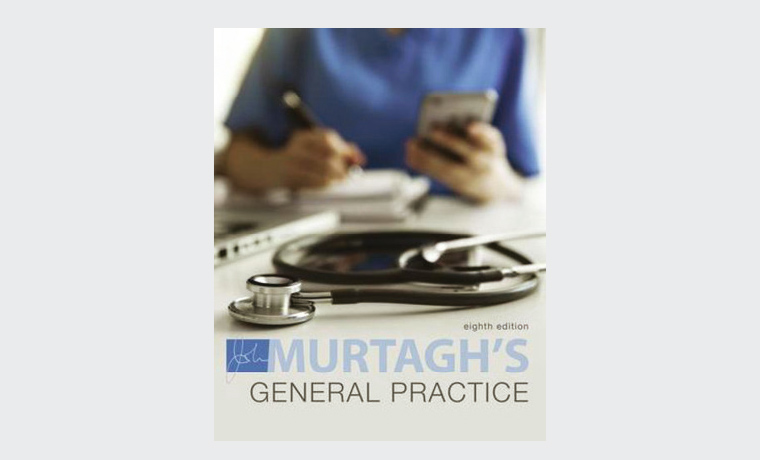
Murtagh’s general practice, 8th edition
Authors: John Murtagh, Jill Rosenblatt, Clare Murtagh, Justin Coleman
Sydney, NSW: McGraw-Hill Education (Australia), 2021
Hardback ISBN 9781743768235
Murtagh’s general practice companion handbook, 8th edition
Authors: John Murtagh, Clare Murtagh
Sydney, NSW: McGraw-Hill Education (Australia), 2021
Paperback ISBN 9781743768266
I was looking forward to reading the latest edition of John Murtagh’s work, perhaps the foundation stone for clinical general practice in Australia and beyond. When I began my registrar training with The Royal Australian College of General Practitioners in the 1980s, the idea that a discipline that seemingly covered ‘everything and anything’ could be purposively and succinctly compiled into a single text was effectively unknown. The idea that there was a structured approach specific to the challenges of primary care clinical presentations was similarly unavailable. The education I received was excellent but rather disease and hospital focused, as was the standard approach at that time. Even basic constructs of the clinical process required consideration of a range of texts across medical interviewing and physical examination, as the other texts were written from essentially a disease rather than clinical presentation perspective. Of note, this was prevalent across all medical specialties and not specific to the nascent specialty of general practice.
In essence, career-focused general practitioners (GPs) like me were left to experiential discovery of the best path to manage our patients in the primary care environment.
How much has changed since then! John Murtagh rose to the challenge with the publication of the first edition of his paradigm-changing work in the early 1990s. Professor Murtagh’s pioneering work was informed by his formal background in education, which helped him visualise the processes needed to help formulate general practice into a discrete clinical discipline. He went on to share his ideas with GPs everywhere through his publications.
I have been fortunate to have worked with GP/family physicians across many parts of the globe, including several countries with developing economies. At every port of call, I would see a copy of Professor Murtagh’s work proudly displayed on their desks, as this was their ‘go-to’ resource.
The latest edition of the main text and companion handbook continue the grand tradition Murtagh pioneered. The content is focused on the way in which clinical consultations unfold. Of the 129 chapters, the first 67 are written from the perspective of problem-solving and management considerations. These include the latest version of Professor Murtagh’s ‘safe diagnostic model’, which underpins the clinical process for managing undifferentiated problems in the primary care environment. Other sections consider core aspects of general practice including chronic disease and the range of common as well as less common but important conditions seen by GPs. Once again, these are written from a consultation rather than disease perspective. All are written in straightforward prose, whose ease of reading and clarity of thought has been aided by the careful editing.
We are fortunate that the text is presented in two formats. The full-text version is 3 kg and over 1500 pages! Essential reading for those embarking on a career in general practice and for quiet reflection. The handbook is pocket sized and provides the essence of evidence-based, safe and effective management across the gamut of general practice presentations, ideal for ready reference across the working day. The beauty of having access to both formats and using these together is the consistency of information, a common pitfall when short- and long-form texts from different authors are used in combination.
As the pace of change for evidence-based clinical medicine accelerates, it is essential to use the latest information, and these texts address this critical need. I recommend this book to those in general practice, across the range of career points, from medical student through to late career.